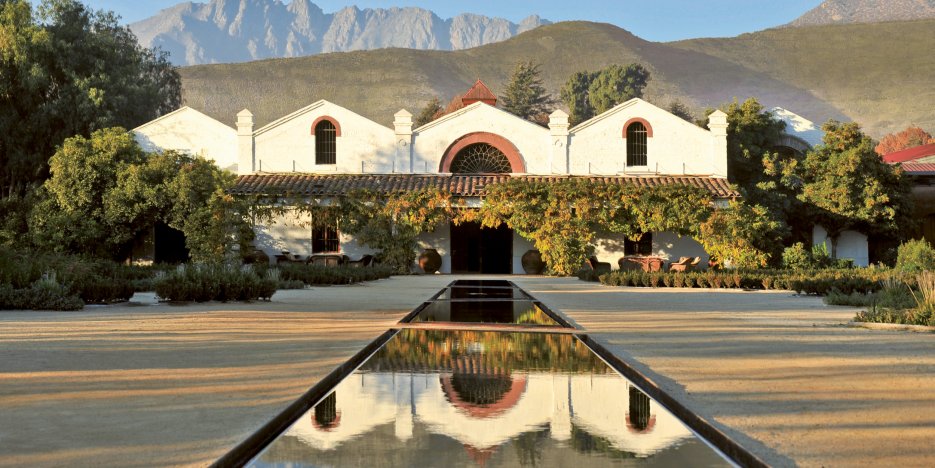

Don Maximiano Founder’s Reserve 2019 6x75cl
The 2017 vintage of Don Maximiano Founder's Reserve captivates with aromas reminiscent of red fruits such as cherries and raspberries. Further back some nice notes of cocoa and clove appear, culminating with a slight floral hint which suggests violets. Aligned with what is perceived on the nose the palate offers cherries, raspberries and cassis flavours, plus the sweet notes of cocoa and clove. The wine has great tension and juiciness.
Vineyards
The Don Maximiano vineyard is located in the Aconcagua Valley and the oldest among them are Max I, Max II and Max V blocks. The region has a long dry season with moderately warm summer days cooled by the soft evening breezes that enter the valley from the Pacific Ocean. Cabernet Sauvignon and Carmenere vines were planted in 1978 and 1993, respectively, while the Petit Verdot was planted in 1999. The three vineyard blocks that contribute grapes for Don Maximiano Founder’s Reserve are planted on north or northeast facing hillsides with 5°–25° of slope. Soils are volcanic, colluvial and piedmont (Max I and II) or alluvial (Max V) in origin, with good drainage conferring low to moderate vigour. The colluvial and volcanic rocky soils of Max I show high presence of mica with clay-silt texture. Max II has deep colluvial soils of volcanic origin, with loam to sandy-loam texture, and both have 30–40% stone content. Max V has deep gravelly alluvial soils with 50% stone content and excellent drainage.
Vintage
The 2019 vintage officially ended at Viña Errázuriz with the harvest of the last Carmenere grapes from the Aconcagua Valley on May 3rd. Now we are able to outline the main conclusions of the 2019 vintage, which is described by Technical Director Francisco Baettig as a dry and warm season, giving way to an early vintage, with splendid sanitary conditions of our grapes. The vintage began with a shortfall of rains by the end of winter and beginning of spring, totalizing a deficit of 30% in 2018. The dry soils pushed us to irrigate one month ahead compared to an average year. On the other hand, the absence of rains during spring ensured splendid sanitary conditions of our grapes, which prevailed throughout the entire season. Temperatures early in the spring were similar to historic records, but were followed by a hot November. After experiencing normal temperatures in December and January, February was a hot month just like November, with heatwaves recorded in the central and southern regions that did not reach the Aconcagua Valley. This scenario made the harvest go ahead of the historical dates. March, on the contrary, was colder than average records. By this time, the harvest in Aconcagua Costa, which started in February 11, was at full speed, and was completed in a record lapse of just 45 days, in benefit of preserving the aromas and acidity of the wines. In general, the vintage delivered good yields, although some varieties registered lower yields than our estimations, such as the decrease in 17% for Cabernet Sauvignon from Aconcagua Inland, 10% for Merlot, 6% for Malbec and 4% for Sauvignon Blanc. In all, a dry and healthy year, warmer than historical averages, with November and February as the hottest months, giving way to an early vintage. The quality of our vineyards was demonstrated once again given the climatic fluctuations, droughts and high temperatures, delivering grapes of outstanding sanitary conditions and great concentration.
Winemaking
Grapes were handpicked in the cool morning hours and transported in small 15-kg boxes to the winery, where they were inspected on a double selection board to assure only the finest quality grapes go to the final blend. Fermentation took place in small-volume stainless steel tanks to allow a larger proportion of contact between the skins and the juice. Up to three daily pump overs were made according to the desired level of extraction. Depending on the individual development of each lot, they completed a total maceration time of 8 to 30 days. All lots were aged for 22 months in French oak barrels (65% new), where malolactic fermentation, clari cation and stabilization occurred in a natural way. To best express the terroir of the Aconcagua Valley, and to increase the wine’s complexity, percentages of Malbec, Petit Verdot, Carmenere and Cabernet Franc were added to the final blend to make it a truly complex wine.
Enjoy with:
- Grilled and Roasted Red Meats
- Pizza/Pasta
- Casseroles/Stews
- Mild Creamy Cheeses
- Mature Strong Cheeses


